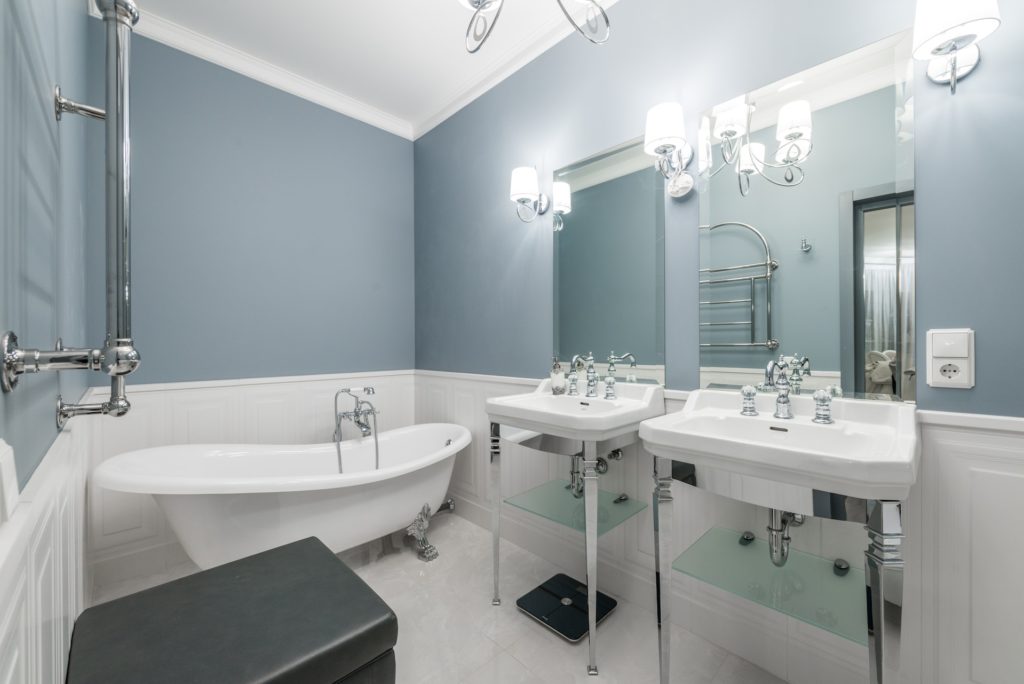When choosing bathroom lights, people often have a lot of challenges since there are so many choices and much to consider. In reality, the right lighting for a bathroom significantly affects the overall attractiveness and functionality of the space. Therefore, the approach to designing bathroom lighting should be planned from the project’s outset.
The tough decisions on lighting include style, layout, colour, brightness and additional fittings. A beautiful outcome is only guaranteed if the right choices are made. Here are some top bathroom lighting considerations that guide bathroom lighting designs.
Ceiling placement
The ceiling is the ideal place to install lighting installations, and bathroom spaces are no different. Ceiling lights offer the widest spread and enhance the theme of the bathroom. Nonetheless, placement is varied. Zone lighting is used to demarcate functional spaces. The set-up involves fitting multiple lights in the ceiling over functional areas like the vanity, shower and toilet.
Another option is the traditional central lighting which incorporates a single fixture strong enough to light the entire bathroom. Other options include wall lighting and string lighting along bathroom fittings.
Theme
Bathroom spaces follow defined design themes. Therefore, it’s important to ensure the lighting accentuates the overall theme. For example, dark themes are best coupled with bright lighting to yield a well-balanced look. On the other hand, warm lighting works well for bright bathroom spaces. Nonetheless, what ought to guide your final selection is the flooring selection, the wall design, the bathroom size, and the space’s natural lighting.
Function
Bathrooms serve several functions, and matching your lighting to these functions is important. For example, vanity areas require bright lighting since the space is designed for wearing makeup and analysing fine details on the mirror. On the other hand, warm lighting is great for shower cubicles and bathtubs. Toilet areas are also best lit with warm lighting options.

What is the best type of lighting for the bathroom?
A good scheme incorporates ambient lighting to illuminate the area, task lighting for specific errands, and accent lighting for a unique touch.
Ambient lighting
Ambient lighting is ideally set up to replace natural light. Most typically, a surface-mounted ceiling light is the primary lighting source. However, exploring a pendant lamp or chandelier is advisable as an alternative to help achieve a better look. Another option available is cove lighting. This option gives a subtle glow around the room’s perimeter using rope lights concealed beneath the moulding on the stepped ceiling.
Task lighting
Task lighting is often installed beside mirrors. This is especially crucial as the lights illuminate subjects in front of the mirror, making it easier to shave and apply makeup. The ideal technique to light the face is with backlights or wall lights on either side of the mirror. Although downlighting works well, it casts shadows on subjects and emphasises the basin and vanity top more.
Accent lighting
Accent lights are not primarily set up to improve lighting but to enhance aesthetics. For example, mounting a linear light source under your vanity top does little for illumination, but it’s a great way to create a uniform, gentle look and the illusion of a floating unit. Moreover, a free-standing bath, shutters, or a feature wall can be highlighted with accent lighting.
In conclusion, creating a functional, gorgeous, and versatile bathroom takes a lot of consideration. However, it’s not impossible. Employ the services of a skilled team of bathroom designers, and the results will exceed your expectations.






